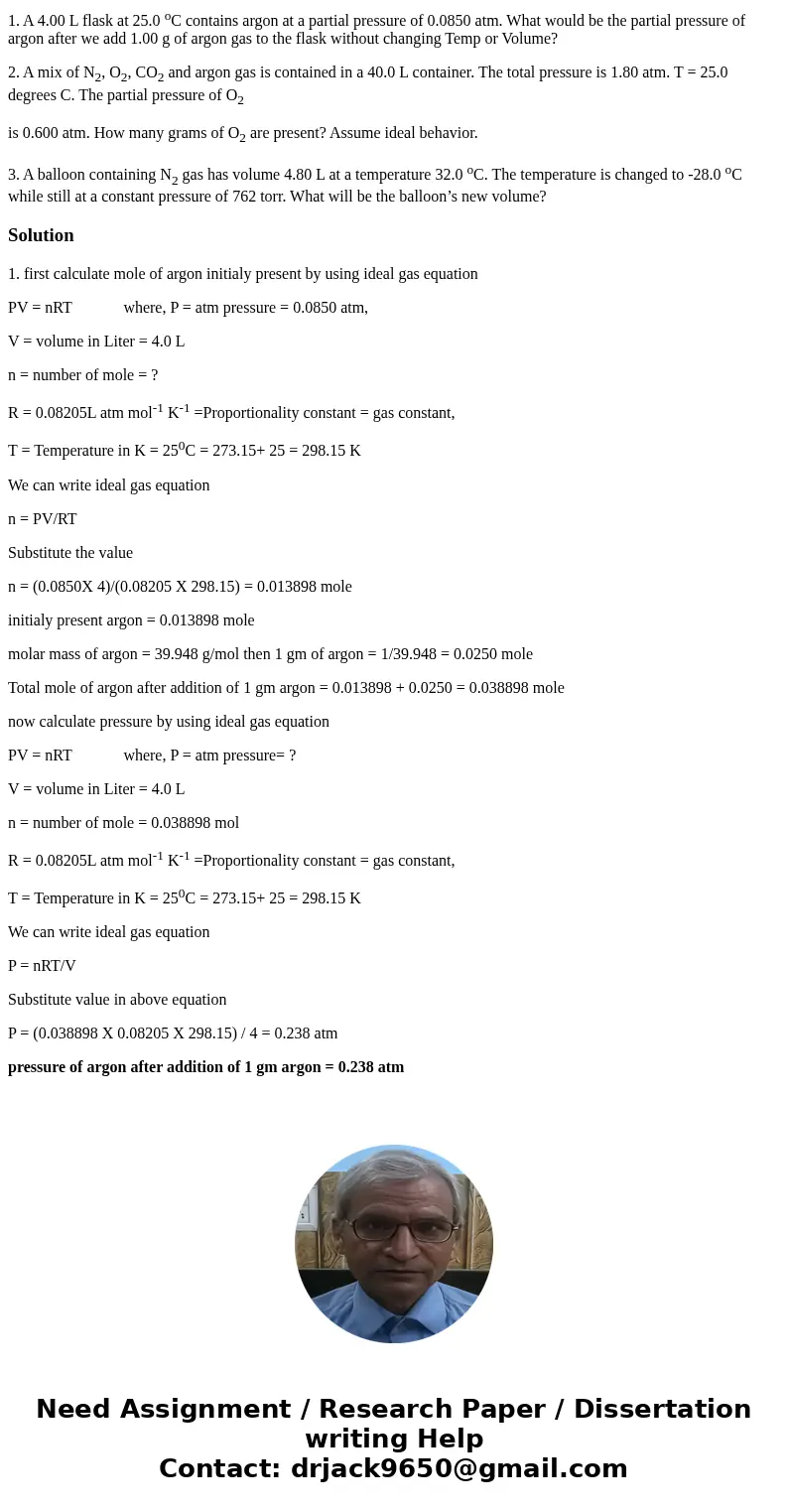1 A 400 L flask at 250 oC contains argon at a partial pressu
1. A 4.00 L flask at 25.0 oC contains argon at a partial pressure of 0.0850 atm. What would be the partial pressure of argon after we add 1.00 g of argon gas to the flask without changing Temp or Volume?
2. A mix of N2, O2, CO2 and argon gas is contained in a 40.0 L container. The total pressure is 1.80 atm. T = 25.0 degrees C. The partial pressure of O2
is 0.600 atm. How many grams of O2 are present? Assume ideal behavior.
3. A balloon containing N2 gas has volume 4.80 L at a temperature 32.0 oC. The temperature is changed to -28.0 oC while still at a constant pressure of 762 torr. What will be the balloon’s new volume?
Solution
1. first calculate mole of argon initialy present by using ideal gas equation
PV = nRT where, P = atm pressure = 0.0850 atm,
V = volume in Liter = 4.0 L
n = number of mole = ?
R = 0.08205L atm mol-1 K-1 =Proportionality constant = gas constant,
T = Temperature in K = 250C = 273.15+ 25 = 298.15 K
We can write ideal gas equation
n = PV/RT
Substitute the value
n = (0.0850X 4)/(0.08205 X 298.15) = 0.013898 mole
initialy present argon = 0.013898 mole
molar mass of argon = 39.948 g/mol then 1 gm of argon = 1/39.948 = 0.0250 mole
Total mole of argon after addition of 1 gm argon = 0.013898 + 0.0250 = 0.038898 mole
now calculate pressure by using ideal gas equation
PV = nRT where, P = atm pressure= ?
V = volume in Liter = 4.0 L
n = number of mole = 0.038898 mol
R = 0.08205L atm mol-1 K-1 =Proportionality constant = gas constant,
T = Temperature in K = 250C = 273.15+ 25 = 298.15 K
We can write ideal gas equation
P = nRT/V
Substitute value in above equation
P = (0.038898 X 0.08205 X 298.15) / 4 = 0.238 atm
pressure of argon after addition of 1 gm argon = 0.238 atm

 Homework Sourse
Homework Sourse